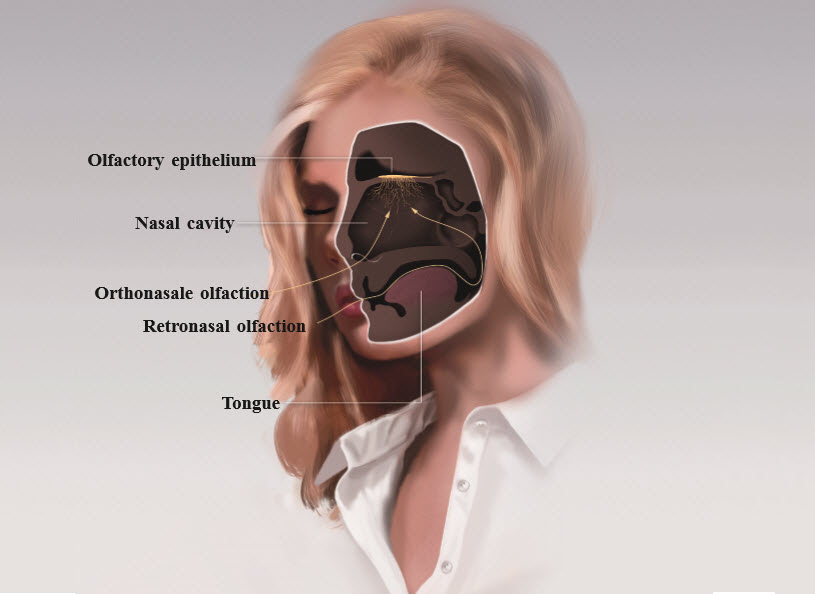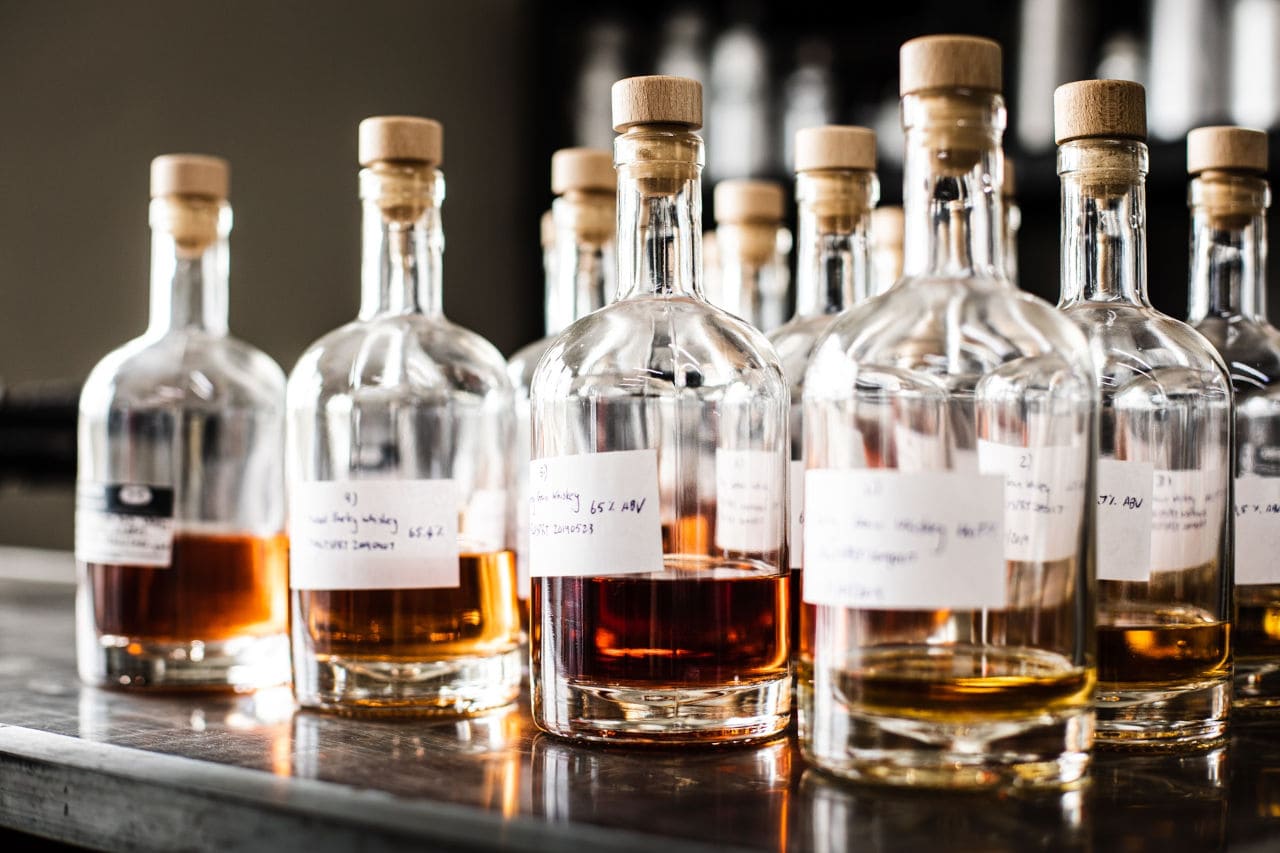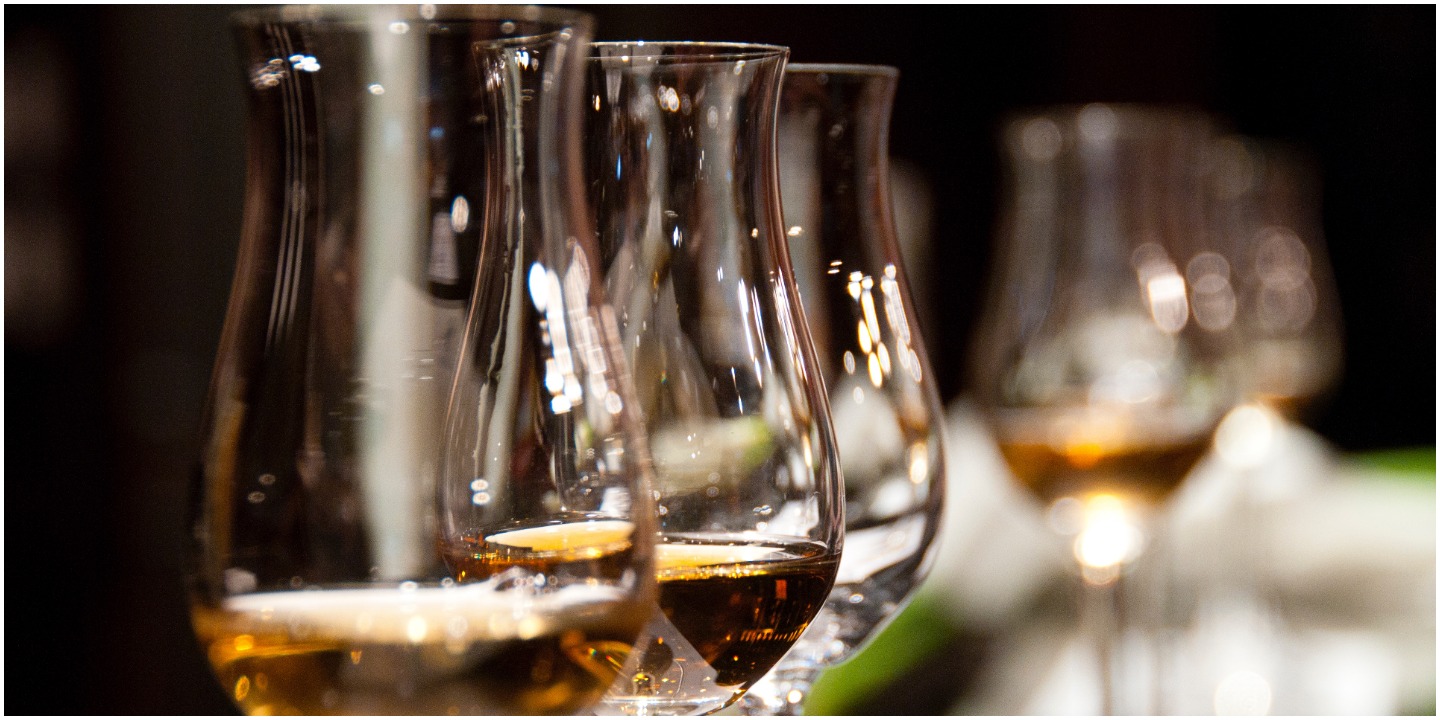Unlock the hidden nuances of whiskey through proper nosing and tasting techniques. Enhance your drinking experience and discover its distinct aromas and flavors. Embark on a sensory journey with us!
Have you ever wondered how to truly appreciate the unique aromas and flavors of whiskey? Whether you're a seasoned connoisseur or just beginning to explore the world of whiskey, understanding the proper techniques for nosing and tasting can enhance your enjoyment and deepen your appreciation for this timeless spirit. By utilizing these essential techniques and engaging all of your senses, you will unlock a whole new world of whiskey exploration and discover the hidden nuances that make each dram truly special. So grab your favorite glass, take a comfortable seat, and let's embark on a sensory journey through the captivating world of whiskey.

The Importance of Properly Nosing and Tasting Whiskey
Whiskey is a complex and nuanced spirit that deserves to be appreciated in its entirety. Properly nosing and tasting whiskey allows you to unlock its distinct aromas and flavors, enhancing your overall drinking experience. By taking the time to understand the intricacies of whisky, you can develop a deeper appreciation for this timeless drink.
Developing an Understanding of Whiskey's Aromas and Flavors
When nosing and tasting whiskey, it's essential to develop an understanding of the aromas and flavors that are characteristic of the different whisky styles. Whiskey can have a wide range of aromas, from fruity and floral to smoky and spicy. Similarly, the flavors can vary from sweet and caramel-like to rich and oaky. By familiarizing yourself with these different characteristics, you'll be able to identify and appreciate them in the whiskies you sample.
Enhancing the Drinking Experience
Proper nosing and tasting techniques not only allow you to identify the specific aromas and flavors in a whiskey but also enhance your overall drinking experience. By taking the time to carefully observe and analyze the whiskey, you'll be able to fully immerse yourself in its sensory pleasures. This attention to detail will not only deepen your appreciation for whiskey but also make each tasting session a memorable and enjoyable experience.
Preparation for Nosing and Tasting Whiskey
Before diving into nosing and tasting whiskey, there are a few essential steps you should take to ensure you get the most out of the experience.
Choosing the Right Glassware
The choice of glassware can significantly impact your nosing and tasting experience. Tulip-shaped glasses, such as Glencairn or copita glasses, are widely regarded as the best options for whiskey tasting. These glasses help concentrate the aromas, allowing you to fully appreciate the complexities of the whiskey. Additionally, the shape of the glass provides a comfortable grip, making it easier to swirl the whiskey gently.
Pouring the Whiskey
When pouring whiskey for nosing and tasting, it's crucial to use the correct amount. Aim for a standard pour of around 30-60ml (1-2 ounces) to ensure you have enough liquid to swirl and coat the glass without overflowing. This amount gives you ample room to observe the whiskey's color, as well as room for the aromas to develop in the glass.
Allowing the Whiskey to Rest
After pouring the whiskey, let it rest in the glass for a few minutes before beginning the nosing and tasting process. This resting period allows the whiskey to open up, releasing its distinct aromas and flavors. During this time, you can observe any changes in the whiskey's appearance, such as the legs or tears forming on the sides of the glass.

The Nose: Identifying Aromas in Whiskey
The nose is a crucial part of the whiskey tasting process as it allows you to identify the various aromas present in the whiskey.
Taking in the First Whiff
Begin the nosing process by gently swirling the glass to release the whiskey's aromas. Bring the glass close to your nose and take in the initial whiff. This first impression can often reveal important clues about the overall character of the whiskey. Pay attention to any immediate scents that stand out, whether they are fruity, floral, spicy, or smoky.
Identifying Different Scent Families
As you continue to nose the whiskey, try to identify different scent families that are present. Common scent families in whiskey include fruit, floral, spice, and oak. Within each family, there can be a wide range of specific aromas. For example, in the fruit family, you may detect notes of apples, pears, or citrus fruits. By discerning the various scent families, you can develop a more nuanced understanding of the whiskey's aromatic profile.
Recognizing Common Aromas in Whiskey
While every whiskey is unique, there are some common aromas often found in different types of whiskey. For instance, Scotch whiskies are known for their peat smoke, while bourbon may exhibit caramel and vanilla notes. Recognizing these common aromas can help you identify and appreciate the distinct qualities of different whiskey styles.
The Taste: Analyzing Flavors in Whiskey
Nosing alone provides valuable insights, but to fully understand whiskey, tasting is equally important.
Observing the Initial Sip
Take a small sip of the whiskey and allow it to coat your palate. Observe the initial flavors that come through. Is it sweet or bitter? Is there a burst of fruity notes or hints of spice? Paying attention to the initial sip will give you a sense of what to expect from the whiskey.
Exploring Different Taste Profiles
As you continue tasting, let the whiskey linger on your tongue and explore its taste profile in more detail. Look for complex layers of flavor, from the base notes to the more subtle nuances. Does the whiskey have a creamy texture or a smoky undertone? Are there any dominant flavors or a delicate balance between different elements? Each whiskey has its own unique taste profile, and exploring these flavors will allow you to appreciate the craftsmanship that goes into creating each bottle.
Detecting Primary and Secondary Flavors
Within each taste profile, you'll often find primary and secondary flavors. Primary flavors are the prominent and defining characteristics of the whiskey. These can include various fruit flavors like berries or citrus, as well as notes of caramel, honey, or chocolate. Secondary flavors are more subtle and might only reveal themselves after multiple sips. These can be anything from subtle floral undertones to hints of baking spices or black pepper. Detecting both primary and secondary flavors will help you fully grasp the complexity and depth of the whiskey you're tasting.

Developing a Whiskey Tasting Technique
To truly appreciate the intricacies of whiskey, it's important to develop a whiskey tasting technique that maximizes your sensory experience.
Taking Small Sips
When tasting whiskey, it's best to take small, measured sips. This allows you to fully experience the flavors without overwhelming your palate. Take your time to savor each sip, allowing the whiskey to spread across your tongue and linger.
Allowing the Whiskey to Coat Your Mouth
As you take a sip, make sure to coat your entire mouth with the whiskey. This technique helps activate different taste receptors, ensuring you capture all the flavors present. Pay attention to how the whiskey feels on your palate - is it smooth and velvety or more abrasive? This aspect of mouthfeel adds another layer to your tasting experience.
Noting the Finish
The finish refers to the lingering flavors after swallowing the whiskey. Pay attention to how long the flavors last and how they evolve over time. Does the finish leave you with a warm, lingering sensation, or does it fade quickly? The finish can provide valuable insights into the overall quality and complexity of the whiskey.
Understanding Whiskey Aromas and Flavors
To truly appreciate whiskey, it's essential to understand the different aromas and flavors that can be present.
Grain and Malt Presence
Whiskey is made from various grains, and the choice of grains used in the distillation process contributes to the overall flavor profile. Some whiskies may have a dominant grain presence, such as the maltiness in Scotch Single Malts or the corn sweetness in Bourbon. Understanding the impact of different grains will help you identify and appreciate their presence in a whiskey.
Fruit and Citrus Notes
Fruit and citrus notes are prevalent in many whiskies, adding a refreshing and vibrant element to the flavor profile. Common fruity flavors in whiskey can range from orchard fruits like apples and pears to tropical fruit notes like pineapple or mango. Citrus flavors, such as lemon or orange, can also make an appearance, adding a zesty and bright character to the whiskey.
Spice and Herb Accents
Spice and herb accents are commonly found in whiskey, providing complexity and depth to the flavor profile. Spices like cinnamon, nutmeg, or cloves can add warmth and a touch of sweetness. Additionally, herbal notes such as mint, thyme, or rosemary can create a unique sensory experience, rounding out the overall flavor profile of the whiskey.
Wood and Oak Influence
Whiskey spends a significant amount of time maturing in oak barrels, which imparts distinct flavors and aromas. As the whiskey interacts with the wood, it absorbs compounds that give rise to flavors such as vanilla, caramel, and toasted oak. The influence of the wood and oak on the whiskey adds depth and complexity, enhancing the overall drinking experience.

Tasting Whiskey: The Art of Describing
Describing the aromas and flavors you perceive while tasting whiskey can enhance your appreciation and help you communicate your experiences more effectively.
Utilizing a Tasting Wheel
A tasting wheel is a visual tool that helps you identify and describe the various aromas and flavors present in whiskey. It typically consists of a series of concentric circles, each representing a different category of aromas or flavors. By utilizing a tasting wheel, you can easily pinpoint specific descriptors that align with your sensory experience. This tool can be particularly helpful for novice whiskey enthusiasts looking to expand their vocabulary and better articulate their tasting notes.
Using Sensory Language
When describing whiskey, using sensory language can paint a vivid picture of your experience. Instead of simply saying a whiskey tastes good or bad, try to delve deeper into the specific aromas and flavors you perceive. For example, rather than stating a whiskey is sweet, you could describe it as having hints of honey, vanilla, or butterscotch. Associating specific aromas and flavors with familiar elements creates a more immersive and relatable description.
Comparing with Similar Whiskeys
Comparing a whiskey you're tasting to others you've tried can help provide context and further refine your sensory perceptions. By identifying similarities and differences between different whiskies, you can develop a better understanding of the specific qualities that make each whiskey unique. This comparative analysis will allow you to appreciate the nuances even more intensely and expand your knowledge of whiskey as a whole.
Common Mistakes When Nosing and Tasting Whiskey
To ensure you have the best whiskey tasting experience possible, it's important to avoid some common pitfalls.
Relying on Personal Bias
Personal bias can significantly influence your perception of a whiskey. Past experiences, expectations, and preferences can cloud your judgment and prevent you from fully appreciating a whiskey's distinct qualities. Approach each tasting with an open mind and let the whiskey speak for itself. By setting aside preconceived notions, you'll be able to more objectively evaluate the aromas and flavors in front of you.
Overwhelming the Senses
When nosing and tasting whiskey, it's essential not to overwhelm your senses. Avoid strong scents, such as perfumes or heavily scented lotions, as these can interfere with your ability to discern the whiskey's aromas. Additionally, take breaks between tastings to give your palate a chance to reset, especially when trying multiple whiskies. By pacing yourself, you'll be able to fully appreciate each whiskey without overwhelming your senses.
Skipping the Water Test
Adding a small amount of water to your whiskey can often enhance the tasting experience. Water can help open up the flavors, revealing new layers and complexities. Experiment with adding a few drops of water to your whiskey and note any changes in the aromas and flavors. Often, a splash of water can make a significant difference in how the whiskey presents itself.

Pairing Whiskey with Food
Whiskey can complement a wide range of food and exploring different pairing options can elevate both your culinary and whiskey experiences.
Understanding Flavor Combinations
Pairing whiskey with food is all about finding harmonious flavor combinations. Consider the whiskey's aromas and flavors and identify ingredients or dishes that can either contrast or complement them. For example, a smoky Islay Scotch might pair well with salty smoked meats or dark chocolate, while a rich bourbon could be perfectly complemented by a caramel-based dessert or grilled steak.
Balancing Intensity
When pairing whiskey with food, it's important to consider the intensity of both the whiskey and the dish. A heavily peated Scotch might overpower delicate foods, while a light and delicate whiskey may get lost when paired with robust, heavily seasoned dishes. Aim for a balance, where neither the whiskey nor the food dominates, allowing each to shine in its own right.
Exploring Different Pairing Options
The possibilities for whiskey and food pairings are nearly endless. Experiment with different combinations to find your own personal preferences. Consider traditional pairings, such as cheese and charcuterie, or venture into more creative territory by exploring fusion cuisine or incorporating whiskey into your cooking. By exploring different pairing options, you can uncover new and exciting flavor combinations.
Whiskey Tasting Etiquette
When participating in whiskey tastings, it's important to adhere to certain etiquettes to ensure a respectful and enjoyable experience for everyone involved.
Savoring the Experience
Whiskey tastings provide an opportunity to indulge in the sensory pleasures of this exquisite spirit. Take the time to savor each whiskey, immersing yourself in its aromas and flavors. Engage all your senses and fully appreciate the craftsmanship behind each bottle. By savoring the experience, you'll derive greater enjoyment and gain a deeper understanding of the whiskey you're tasting.
Respecting Others' Preferences
Whiskey tastings often involve sampling multiple bottles, each with its own unique characteristics. Remember that everyone's palate is different, and individuals will have their own preferences. Respect and appreciate the diverse opinions and taste preferences of those around you. Engage in discussions and share your experiences, but refrain from dismissing or belittling someone's taste preferences.
Engaging in Conversations
Whiskey tastings are often social gatherings that provide an opportunity to connect with fellow whiskey enthusiasts. Engage in meaningful conversations about the whiskies you're tasting, sharing your insights and listening to others. Ask questions, seek recommendations, and learn from the collective knowledge of those around you. By actively participating in conversations, you'll deepen your understanding and appreciation for whiskey as a community-driven beverage.
In conclusion, properly nosing and tasting whiskey is an art that allows you to unlock the distinct aromas and flavors of this beloved spirit. By understanding the importance of preparation, developing a tasting technique, and being mindful of common mistakes, you can elevate your whiskey drinking experience to new heights. With each sip, you'll gain a deeper appreciation for the complexity and craftsmanship behind this age-old beverage, making every whiskey tasting a memorable and enjoyable journey.
